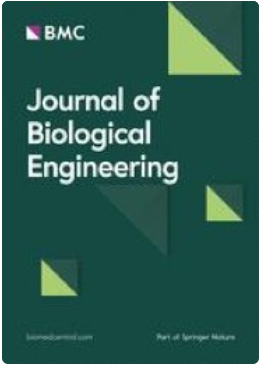Chitosan modified with PAP as a promising delivery system for melatonin in the treatment of osteoporosis: targeting the divalent metal transporter 1
IF 5.7
3区 生物学
Q1 BIOCHEMICAL RESEARCH METHODS
引用次数: 0
Abstract
The demands for novel and efficient therapies have gradually increased with the rising concerns of osteoporosis (OP). The most popular method in promoting bone regeneration during osteoporotic conditions consists of loading bioactive materials with different drugs to treat osteoporotic bones by either promoting the process of osteogenesis, or by inhibiting the activity of osteoclasts. By analyzing single cell sequencing results, we found that divalent metal transporter 1 (DMT1) played a role in OP. Based on our previous results, we found that melatonin (MT) suppressed expression of DMT1 induced by high glucose during OP, so we determined the efficacy of MT for the treatment of OP. However, the clinical effects of MT on OP were unsatisfactory. To enhance its biological efficacy, we combined MT with porous gelatin chitosan (chitosan) and the conductive material, PLA-b-AP-b-PLA (PAP), then determined how MT incorporation in chitosan@PAP nanoparticles affected the ability to promote MC3T3-E1 osteogenesis and mineralization, both in vitro and in vivo. The results confirmed the effect of MT on DMT1. We then prepared and characterized composites prepared as nanofibers, and determined the efficacy of MT combined with chitosan-PAP modified hydrogels as a slow-release system in a femur model of osteoporosis mice, with associated properties suitable for bone tissue engineering. The results indicated that MT-loaded chitosan@PAP nanospheres showed favorable osteogenic functions, both in vivo and in vitro, providing a practical solution for bone regeneration for OP patients.用 PAP 修饰的壳聚糖是治疗骨质疏松症的一种前景看好的褪黑素递送系统:靶向二价金属转运体 1
随着人们对骨质疏松症(OP)的日益关注,对新型高效疗法的需求也逐渐增加。在骨质疏松症的治疗过程中,最常用的方法是在生物活性材料中加入不同的药物,通过促进成骨过程或抑制破骨细胞的活性来治疗骨质疏松症。通过分析单细胞测序结果,我们发现二价金属转运体 1(DMT1)在 OP 中发挥了作用。基于之前的研究结果,我们发现褪黑素(MT)能抑制 OP 期间高糖诱导的 DMT1 的表达,因此我们确定了 MT 治疗 OP 的疗效。然而,MT 对 OP 的临床效果并不理想。为了提高MT的生物学疗效,我们将MT与多孔明胶壳聚糖(壳聚糖)和导电材料聚乳酸-b-AP-b-PLA(PAP)结合在一起,然后测定了壳聚糖@PAP纳米颗粒中的MT在体外和体内促进MC3T3-E1成骨和矿化的能力。结果证实了 MT 对 DMT1 的影响。然后,我们制备了纳米纤维复合材料并对其进行了表征,确定了 MT 与壳聚糖-PAP 改性水凝胶结合作为缓释系统在骨质疏松症小鼠股骨模型中的功效,以及适合骨组织工程的相关特性。结果表明,MT负载壳聚糖@PAP纳米球在体内和体外均表现出良好的成骨功能,为OP患者的骨再生提供了一种实用的解决方案。
本文章由计算机程序翻译,如有差异,请以英文原文为准。
求助全文
约1分钟内获得全文
求助全文
来源期刊

Journal of Biological Engineering
BIOCHEMICAL RESEARCH METHODS-BIOTECHNOLOGY & APPLIED MICROBIOLOGY
CiteScore
7.10
自引率
1.80%
发文量
32
审稿时长
17 weeks
期刊介绍:
Biological engineering is an emerging discipline that encompasses engineering theory and practice connected to and derived from the science of biology, just as mechanical engineering and electrical engineering are rooted in physics and chemical engineering in chemistry. Topical areas include, but are not limited to:
Synthetic biology and cellular design
Biomolecular, cellular and tissue engineering
Bioproduction and metabolic engineering
Biosensors
Ecological and environmental engineering
Biological engineering education and the biodesign process
As the official journal of the Institute of Biological Engineering, Journal of Biological Engineering provides a home for the continuum from biological information science, molecules and cells, product formation, wastes and remediation, and educational advances in curriculum content and pedagogy at the undergraduate and graduate-levels.
Manuscripts should explore commonalities with other fields of application by providing some discussion of the broader context of the work and how it connects to other areas within the field.
 求助内容:
求助内容: 应助结果提醒方式:
应助结果提醒方式:


